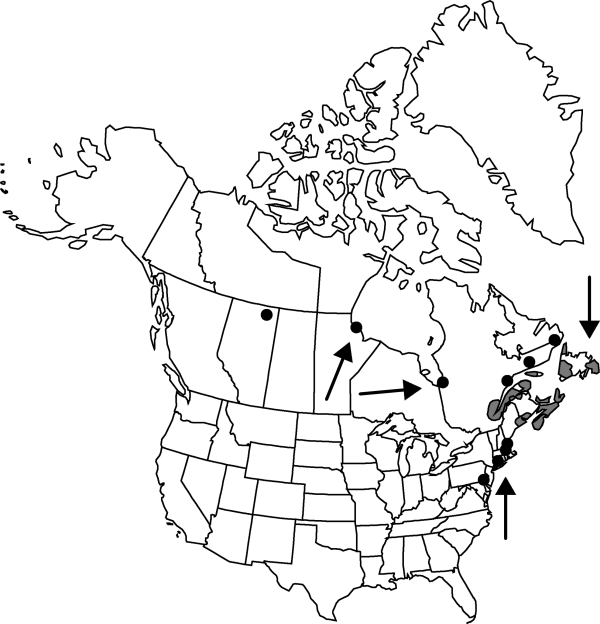Difference between revisions of "Atriplex glabriuscula"
Fl. Shetland, 39. 1845.
FNA>Volume Importer |
FNA>Volume Importer |
||
| Line 65: | Line 65: | ||
|publication year=1845 | |publication year=1845 | ||
|special status= | |special status= | ||
| − | |source xml=https://jpend@bitbucket.org/aafc-mbb/fna-data-curation.git/src/ | + | |source xml=https://jpend@bitbucket.org/aafc-mbb/fna-data-curation.git/src/f6b125a955440c0872999024f038d74684f65921/coarse_grained_fna_xml/V4/V4_639.xml |
|genus=Atriplex | |genus=Atriplex | ||
|subgenus=Atriplex subg. Atriplex | |subgenus=Atriplex subg. Atriplex | ||
Revision as of 20:01, 24 September 2019
Herbs, monoecious, prostrate or sprawling, or sometimes erect, branched, (1–)2–10 dm; branches opposite or subopposite. Stems green and striped, often blue-green when fresh, weakly ridged, sparsely scurfy to glabrous. Leaves: petiole 0.2–2.5(–3.5) cm; blade all entire or some or all triangular or lance-hastate with lobes spreading to antrorse, 5–100 × 3–80 mm, base abruptly to narrowly cuneate, entire or irregularly toothed. Flowers in loose glomerules, arranged in foliose, interrupted spikes or axillary, terminating stems and branches. Bracteoles green, becoming black or reddish to yellow brown, sessile or some short stipitate, venation obscure, ovate-triangular to rhombic-triangular, 5–13 mm, margin united almost to middle, with few irregular teeth or entire, apex abruptly acuminate, faces irregularly muricate, tuberculate, or smooth, inflated, spongy inner layer strongly developed at bracteole base. Seeds dimorphic: brown, 2.5–4 mm wide (often the only ones present), or black, (1.2–)1.5–2.9(–3) mm wide; radicle median, ± antrorse, of brown seed basal and spreading. 2n = 18, 36.
Distribution

n North America, Europe.
Discussion
Varieties 3 (3 in the flora).
Members of the Atriplex glabriuscula complex occupy saline or brackish marshes and saline coastal strands mainly in the eastern maritime provinces of Canada, with extensions in similar habitats into the northeastern United States. They are seldom, if ever, ruderal weeds and appear to be indigenous or perhaps early introduced in some part from similar European habitats. The constituent taxa have been regarded at specific level (P. M. Taschereau 1972; I. J. Bassett et al. 1983). They are, however, alike in all major morphologic features, and are apparently closely allied. For those who wish to treat them at specific level, the names are supplied in the synonymy.
Selected References
None.
Lower Taxa
Key
| 1 | Bracteoles thin throughout; black seeds 2.0-2.9 mm; bracteoles entire or with tooth on each margin, ovate-triangular | Atriplex glabriuscula var. acadiensis |
| 1 | Bracteoles often if not always spongy-thickened at the base; black seeds rare or lacking, or of various size; bracteoles variously toothed | > 2 |
| 2 | Bracteoles sessile or nearly so; inflorescence with leafy bracts throughout; black seeds rare (or lacking), 1.5-2.5 mm; United States and Canada | Atriplex glabriuscula var. glabriuscula |
| 2 | Bracteoles, at least some axillary ones, short stipitate; inflorescence with leafy bracts only near base; black seeds 1.2-2 mm; Canada | Atriplex glabriuscula var. franktonii |